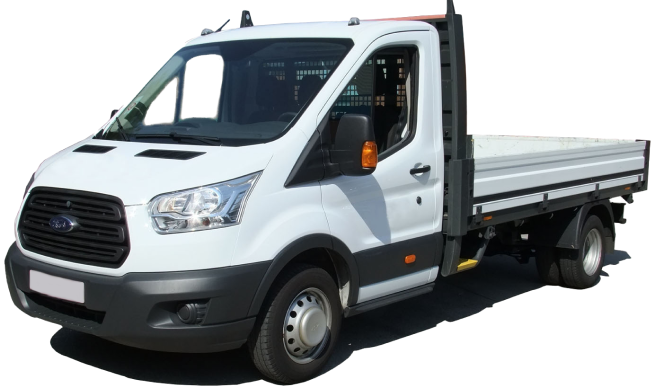So you know you need a new van for your business, but you’re not exactly sure what van it is that you need. There are many different types of vans out there, so it’s hardly surprising that you may feel a little confused, particularly when it comes to commercial vans as they all have their unique benefits and uses. And even with the huge range of vans on offer, often a more tailor-made solution is needed, and that’s where commercial van configurations come in. These configurations are often an extension to a basic chassis cab, fitted out to make them more suitable for a wider range of jobs. Two of the most common are Tippers and Dropsides – both a popular choice of commercial vehicle and known as real workhorse vans due to their ability to transport heavy materials to and from sites.
Should I lease a Tipper or a Dropside? It’s a question we are asked time and time again; so today we are going to explore the key differences between the two and outline why one might suit your business more than the other.
Before we answer these questions, let’s start with a few basics.
A tipper van is a light commercial vehicle capable of carrying a variety of loads and equipment in its open body. Tippers are equipped with an under-floor tipping system that allows you to tip the vehicle body to unload heavy loads at the rear of the vehicle. They tend to be popular with light construction and landscaping businesses because they make transporting building material, heavy garden waste and other items easy.
The tipping action itself will depend on the model you choose and should be a key consideration when selecting a tipper van. The lowest-cost tipper options are likely to only tip backwards, but that’s just one type – there are also three-way tippers, which allow tipping to either side as well to the rear.
A dropside van is a light commercial vehicle in which you can open and drop the vehicle’s side and tailboards to allow for easy loading. A Dropside’s open flatbed body allows for easy access for forklift trucks and they tend to be popular with construction and scaffolding companies as they make it easier for carrying bricks and heavy metals such as scaffolding poles. Dropside vans are some of the most durable vans on the market, able to take high payloads and cater to a wide range of businesses. A dropside van is usually offered as a single or crew cab and comes in a range of sizes.
A tipper or dropside van is simply an extension of a chassis van and it’s offered as a single or crew cab and comes in a range of sizes. Depending on how many people you need to transport, single and double cab options are available. The double cab option is extremely popular as it can carry up to six passengers, with the lower-cost, smaller single cab options only able to carry one or two passengers.

One of the most important things you’ll want to know is how much weight can be carried in the back of your dropside. It’s important for practical reasons, but also, the DVSA (Driver and Vehicle Standards Agency) has been issuing an increasing number of fines for those who overload, cracking down on drivers who break the weight rules.
The size of the load area can vary widely on tippers and dropsides, but a typical example would be around 3m long by 2m wide. The vans are used to transport materials that tend to be pretty heavy, and for tippers, generally, a typical payload will vary from 700kg up to 1.3 tonnes. Dropsides can carry a greater payload than a tipper but the big drawback is of course that the body can’t be elevated to load and unload goods at the other end. That said, the dropside is usually based on larger vans and carry payloads of around 1.5 tonnes, sometimes a bit more depending on the model you go for.
The good news is, tippers and dropside vans are available in various sizes across a wide range of makes and models.
A tipper with an all-steel construction is best suited to heavy demolition style activities, but if it’s for lighter works such as gardening, a resin-bonded tipper floor and aluminium for the drop sides might be best. The most popular manufacturers of tipper vehicles are Ford Transit, Volkswagen, Nissan, Renault and Fiat.
The dropside is usually offered as a variant of single or double chassis cab vans, and most models are based on large vans, such as the Ford Transit, Citroen Relay, Volkswagen Crafter, Mercedes Sprinter and Renault Master.
At Vanleasing.com we have a wide range of new tippers and dropside vans to lease. We work with every major manufacturer, and our experienced team can give you a full rundown on the pros and cons of each model helping you get the configuration best suited to your business.